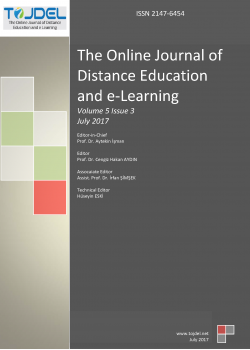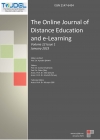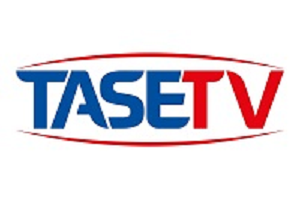TOJDEL - Volume 5 - Issue 3 - July 2017
 A COMPREHENSIVE FRAMEWORK FOR LEARNING EVENTS
A COMPREHENSIVE FRAMEWORK FOR LEARNING EVENTS Kalaivani P, Mohamed Mansoor Roomi S, Annalakshmi M
Abstract:
Intelligent video surveillance system plays a vital role in learning the events remotely. In recent years,
surveillance systems are widely used in all places starting from border security application to street monitoring
systems. The surveillance system can also be used to monitor the activities of a student who learns the course
through distance e-learning. The teacher can use a surveillance monitor to watch the behavior of the student from
a remote place. In e-learning scenario, attending the course or learning with system are considered as usual
activities and the other activities like walking, bending, paper passing and hand waving are referred to as unusual
events. The intelligent surveillance system has to learn itself the events in the capturing video and make a
decision about the event whether it is usual or unusual. This paper deals with an algorithm for a machine
learning approach to learn the video events. It presents a detailed review of various techniques for abnormal
event detection in video and it presents current scenario of research in this area. It detects the events using
features of histogram of optical flow orientation, magnitude and entropy (HOFOME) combined with the
histogram of oriented gradients (HOG). It classifies whether the event is usual or unusual with different machine
learning classifiers namely Classification Tree (Ctree), Support Vector Machine (SVM). This paper presents the
experimental results of the algorithm applied on benchmark dataset. The performance comparison shows that the
proposed work outperforms the state of the art methods.
 A STUDY ON THE IMPACT OF E- CONTENT NEWS AMONG THE AUDIENCE IN TAMILNADU (Quantitative Analysis Method)
A STUDY ON THE IMPACT OF E- CONTENT NEWS AMONG THE AUDIENCE IN TAMILNADU (Quantitative Analysis Method) Ravichandran.K, Arulchelvan.S
Abstract:
E- Content has grown to become an inseparable phenomenon of the human society today. News of E- Content
and justice of the Indian society are amazing. We are consistently engaged in the everyday conversations with econtent
e- films, e- books, e- newspapers, e- magazines, e- content broadcasts and publishing. E- News Content
plays congregation criminality and a profession role in the criminal justice system. The efforts of e- content
promote a long story short victimization by teaching crime prevention behaviors, increased society knowledge
and society attitudes about crime prevention. The e- contents preoccupations mutually deviance and
overemphasis on brutal e- content has attracted to concerns that coverage can cause e- content to rise. Even
though mass e- content like newspapers, e- channels are providing more news and information about the crime,
the common public have repeatedly victimized through various e- contents. The specific objectives of the study
are the method of sources e- content news gathering and the perception among the public through the e- content
news and the impact on the e- content news among the public. In such a scenario, e- news content has been
playing an important role to construct the e- content awareness to the public by publishing e- news content
alarmingly. This gap between the actual e- content and the one that is portrayed in the e- content and how it
impacts that the people were been analyzed o exactly comprehend about e- content impact when e- news content
is consumed separately public. The probability of Regression value is in effectively and accurately assessing the
E- News content and impact on E- news content has used in this study to derive the result.
 CLOSING GAP BETWEEN LEARNING AND USE: OPERATIONALIZING THE SITUATED COGNITION CONSTRUCT TO CREATE AUTHENTIC ONLINE LEARNING CONTEXTS
CLOSING GAP BETWEEN LEARNING AND USE: OPERATIONALIZING THE SITUATED COGNITION CONSTRUCT TO CREATE AUTHENTIC ONLINE LEARNING CONTEXTS Mapopa William Sanga
Abstract:
In response to the need to improve quality in online learning, the present developmental study utilized the
pedagogy advocated in situated cognition theory to create authentic learning contexts in online learning. An indepth
review of the literature in situated learning and online learning was conducted and six features of the
situated cognition construct were identified and used as basis for creating a framework for operationalizing tasks
in online learning environments. These features were specifically operationalized in a learning management
system setting. In order to ensure quality, the framework was evaluated by one situated cognition expert and two
online instructors and revised based on their feedback.
 PERCEPTIONS OF SENIOR HIGH SCHOOL STUDENTS TOWARDS E-LEARNING PLATFORM IN SOME SELECTED SENIOR HIGH SCHOOLS IN CAPE COAST METROPOLIS
PERCEPTIONS OF SENIOR HIGH SCHOOL STUDENTS TOWARDS E-LEARNING PLATFORM IN SOME SELECTED SENIOR HIGH SCHOOLS IN CAPE COAST METROPOLIS John K. Edumadze, Kwaku Anhwere Barfi
Abstract:
With the emergence of the internet, e-learning have enhanced and improve the quality of education delivery on
equitable basis in second cycle institutions. This change in the learning experience could not have come at a
better time. This has made it imperative that students not only need to use e-learning platform, but they need to
become comfortable and competent in it use.
This paper examines the perception of Senior High Schools students towards the use of e-learning platform in
selected Senior High Schools in Cape Coast Metropolis. Probability sampling technique was used to select 600
respondents from three mixed Senior High Schools. Questionnaire was used in collecting data. SPSS version
20.0 was the software used. Frequency tables and chi-square were used in presenting the data.
The study revealed that majority of the students has heard of e-learning platform. Challenges in the use of elearning
platform include irregular internet access, lack of technical know-how and lack of feedback from peers
and teachers. However, there were significant relationship between students’ perceived ease of use and
perception towards e-learning platform and a significant relationship between technology accessibility and
computer ownership. We recommend that classrooms and laboratories in Senior High Schools should be fully
equipped to support patronage of e-learning.
 THE STANDARD E-LEARNING TECHNIQUES ON VLSI DESIGN
THE STANDARD E-LEARNING TECHNIQUES ON VLSI DESIGN K.Kalyani, S.Rajaram
Abstract:
E-learning platform provides anywhere, anytime easy access for upgradation of knowledge and skills. It provides
a platform wherein the individual gets a customized package related to key thematic areas, through a self-guided
process. Despite this, it is felt that the system of E- learning can be made more effective and result-oriented
particularly in the Indian context. Number of new innovative strategies are developed for E-learning.
Educational systems are thus looking to e-learning programs to substantially improve the quality and content of
their education. Integrating e-learning to existing educational system can, however, be a major challenge. In the
existing educational system, Very-large-scale integration (VLSI) is the process of creating an integrated circuit
(IC) by combining thousands of transistors into a single chip. With the advent of very large scale integration
(VLSI) designs, the number of applications of integrated circuits (ICs) in high-performance computing, controls,
telecommunications, image and video processing, and consumer electronics has been rising at a very fast pace.
There are number of online courses offered in VLSI design but not standard. This present paper tries to suggest
one of the standard E-learning system in VLSI called IEEE (Institute of Electrical and Electronics Engineers)
blended learning program to improve the quality and content of education in VLSI design.






